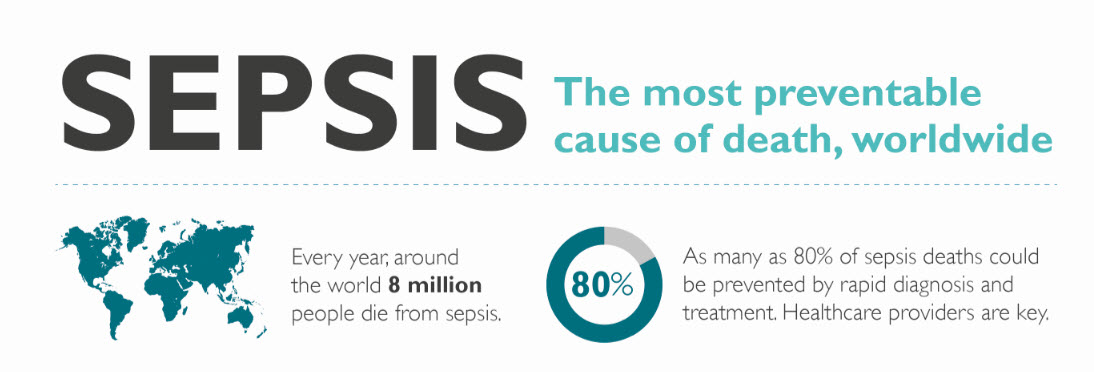Sepsis Survivor Week
February 10-16, 2019
Betsy Cohen suffered what might have been a minor injury during a routine colonoscopy. Her injury, however, was the first of a series of events marked by poor teamwork and communications that translated into a failure to diagnose sepsis. As a result, her life was irrevocably changed.
Betsy turned her experience into an opportunity to help healthcare providers and patients navigate the after-effects of patient harm. Prior to her injury, she had nearly 30 years of experience as a rehabilitation specialist and case manager working with patients who suffer from neurological and neuropsychiatric impairment. That was not enough to save her from the lasting effects of sepsis.
During Sepsis Survivor Week, we’re celebrating Betsy’s work. Betsy permitted us to use her story when we first launched our Every Life program in 2017. Much of her work today is focused on preventing and repairing instances of medical error as part of a program that involves both patients and doctors, ACFC (Apologize, Communicate, Forgive and Change).
Every Survivor's Story Reminds Us of the Importance of Time
Sepsis affects 1.7 million people per year in the U.S., and 270,000 of those people die.1,2 That equates to one new victim every 2 minutes.3 In our hospitals, sepsis is the leading cause of death and it also accounts for the leading cause of hospital readmissions.4 All told, admissions and readmissions combined translate into one person entering a U.S. with sepsis once every 20 seconds.
Hospitals, however, are just a lead indicator. Sepsis is a civic-wide problem with 87% of cases originating in the community.5 In response, the National Association of EMS Educators (NAEMSE) has issued a position paper urging preparedness by EMS to deal with the current sepsis epidemic. NAEMSE points out that EMS transports five patients with sepsis for every two with a myocardial infarction, and that more than half of patients with sepsis who arrive at hospital EDs are transported by EMS.6
Regardless of the setting, pre-hospital or hospital, the critical factor in patient survival is time—time to recognition and time to treatment. The risk of death from sepsis increases by as much as 8% for every hour that treatment is delayed.7 Sepsis is a medical emergency and its symptoms—which can often be masked as a stroke or other conditions—must be treated quickly to reduce the risk of death. As many as 80% of sepsis deaths could be prevented with rapid diagnosis and treatment.8
Of course, our efforts shouldn’t be focused just on survival. They should be focused on quality of survival.
The Sepsis Alliance has declared February 10-16 as Sepsis Survivor Week. To support their efforts, we are sharing with you some of our recommended content. We hope that it proves useful as you create a community of providers who will stop time for a patient with sepsis and prevent lost time from becoming an irreversible forever event. If we can help enable you to train your teams to prevent the causes of sepsis or treat sepsis when it occurs, please contact us.
Sepsis Awareness Infographic
The following infographic shares some important information about sepsis. Please share it with anyone who could benefit.

References
- worldsepsisday.org
- Kumar A, Roberts D, Wood KE, Light B, Parrillo JE, Sharma S, Suppes R, Feinstein D, Zanotti S, Taiberg L, Gurka D, Kumar A, Cheang M. (2006) Duration of hypotension before initiation of effective antimicrobial therapy is the critical determinant of survival in human septic shock. Crit Care Med. 34(6): 1589-96. DOI: 10.1097/01. CCM.0000217961.75225.E9